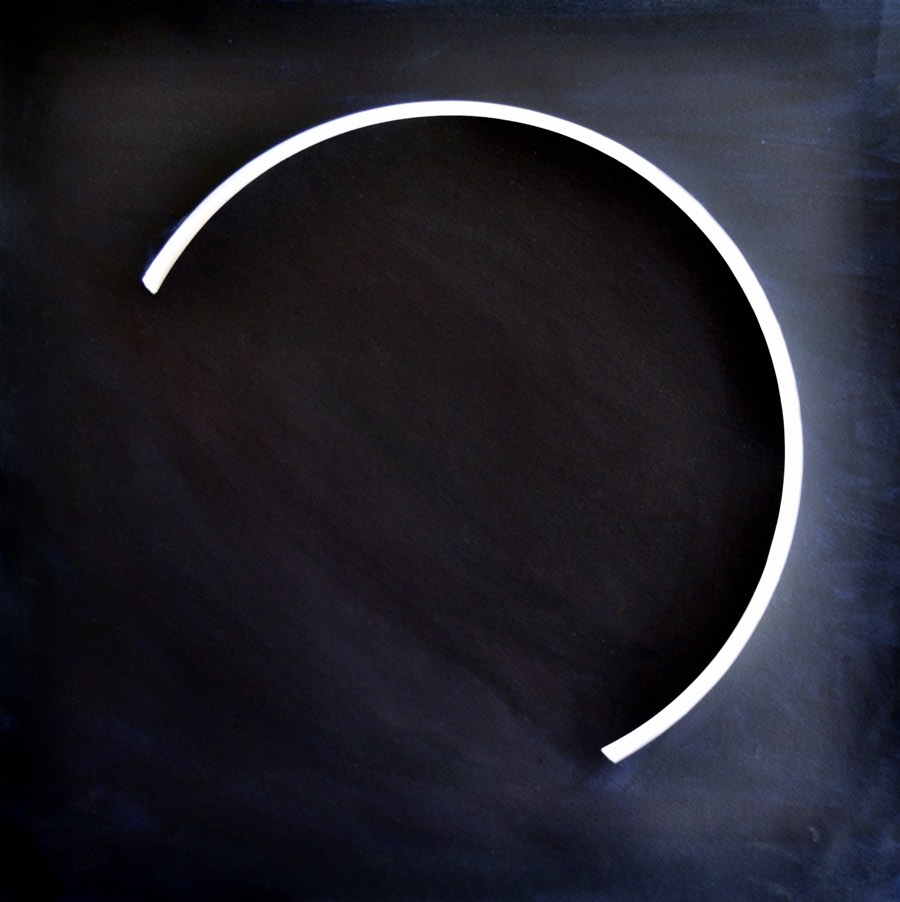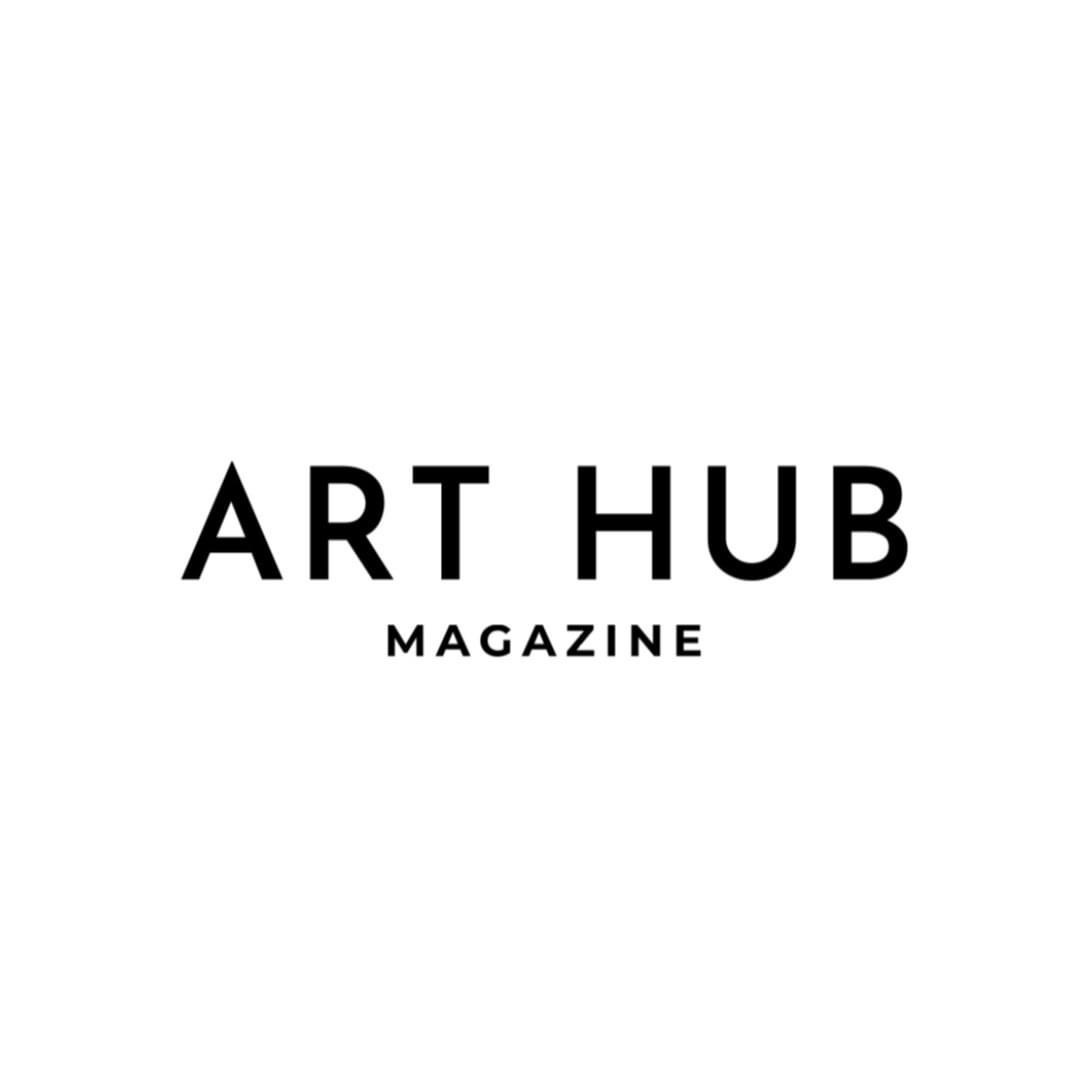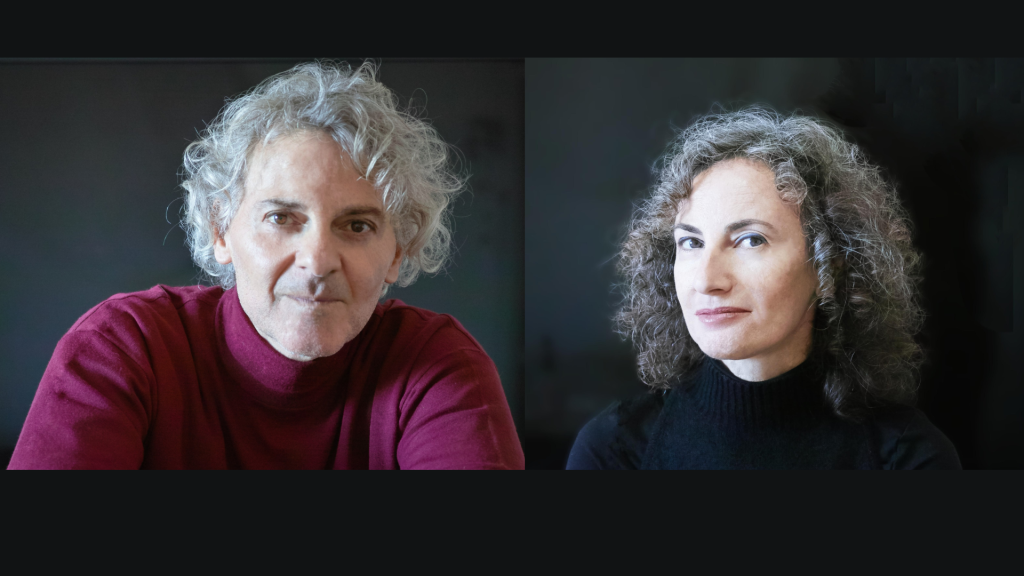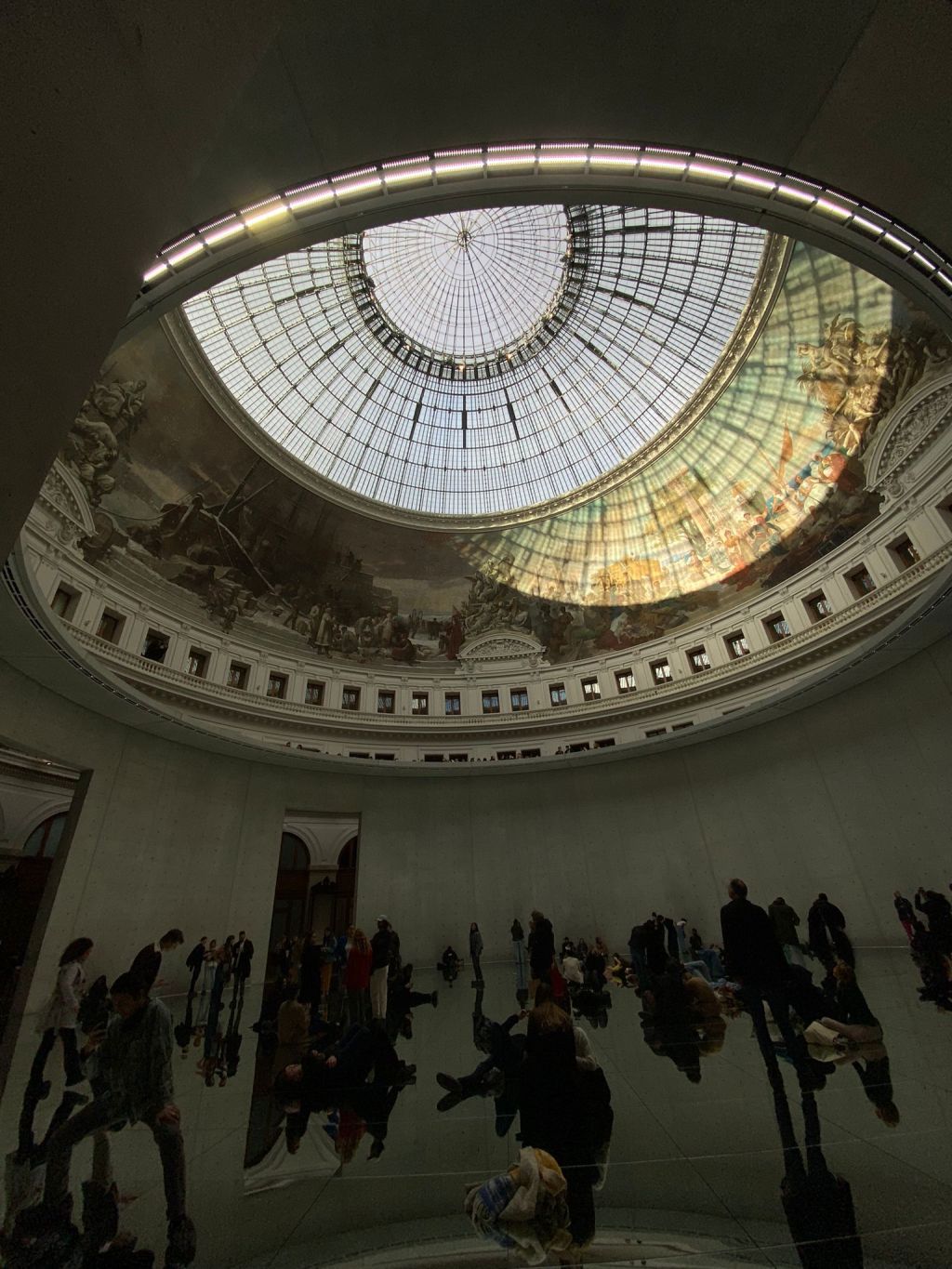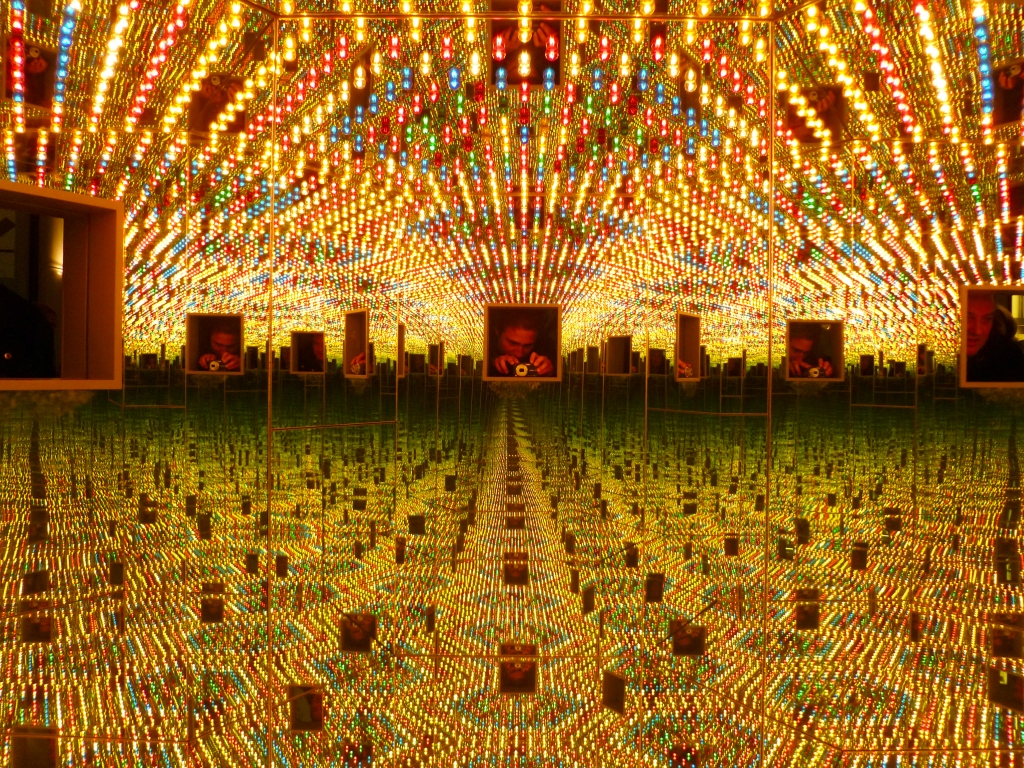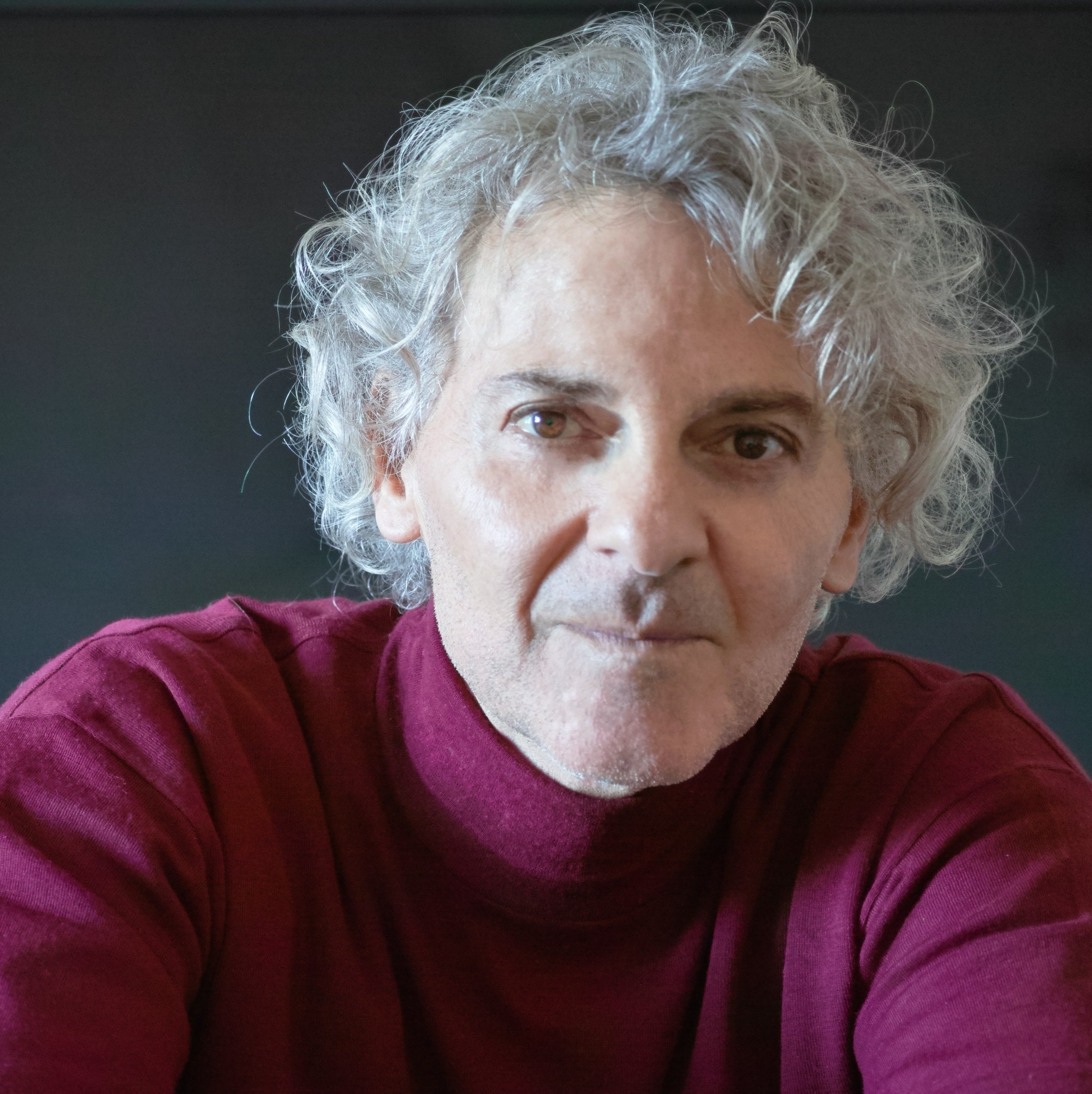
As artists who have been immersed in the art world for over 20 years, how do you navigate and find common ground in your individual explorations of social issues, change, and emptiness?
It is peculiar that you used the word navigare (in italian – navigate), we live in the south of Italy in a house that is fifty metres from the sea and the word navigare takes on an added value to the identity of the sea. We are two very distinct entities, born with the sea, together we have developed a sensitivity, a confrontation, a strong and decisive harmony, there is an intellectual complicity. Living with the sea means coexisting in a strong wild environment with its own distinct identity. The sea changes its face at every moment, it never gives you time to get used to the static nature of space. This is where we discovered the word change.
Everything changes every moment of its life, like the wind that transforms the surface of the sea and creates sand dunes on the beach. Together we share this transformation, living in a world where issues such as environmental pollution, poverty, immigration, are strong realities that affect our art. There is an intrinsic play within our spirituality and the social life around us.
Our common ground is involvement, feeling, we are not indifferent to what happens, this automatically implies an analysis, an unstoppable continuous dialogue, we convey this in our works. A walk by the sea implies a deeper analysis of the environment, a refugee landing a short distance from home we automatically translate this into our works.
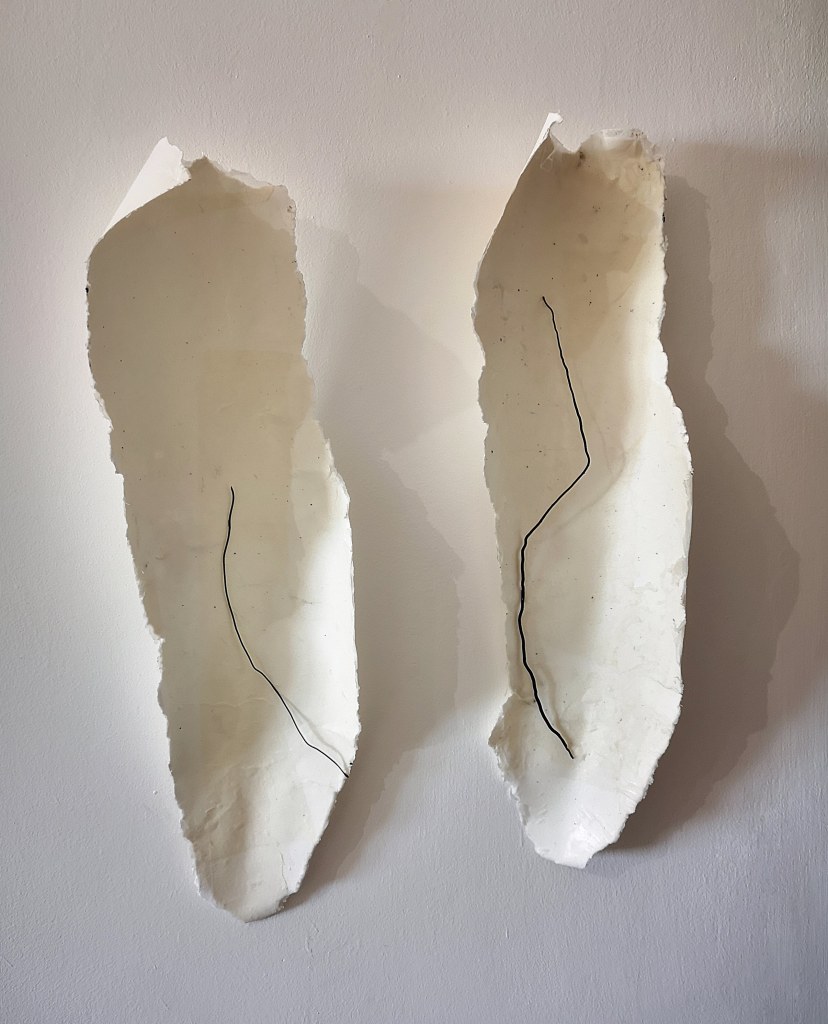
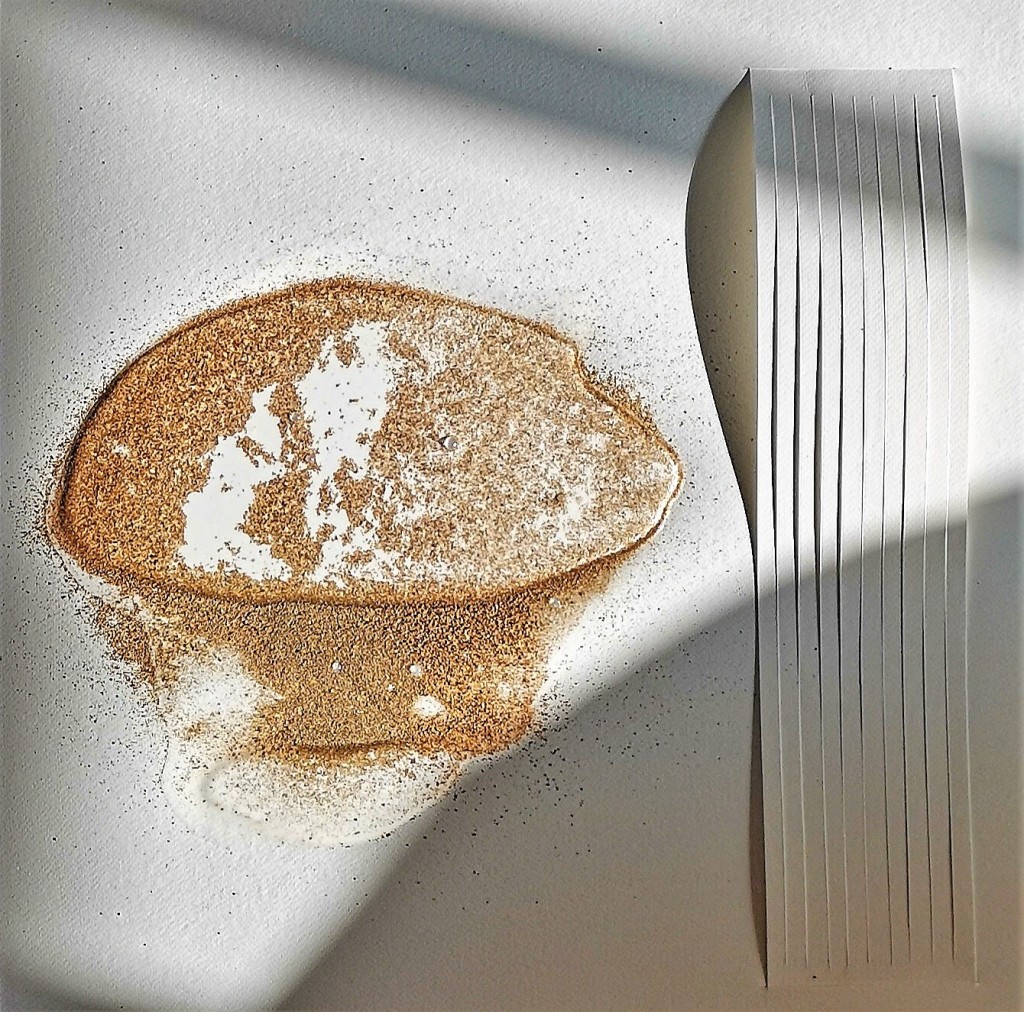
Are there specific projects or exhibitions where your distinct perspectives have blended seamlessly or created compelling contrasts?
Our diversities are the union of our harmonies, we have managed to find a balance, a meeting point, there is no lack of contrasts that are necessary to move forward in our artistic journey. Diversity has dynamism, it propels us in an unstoppable and uncontrollable circular movement as if we were inside a circle whose perimeter prevents us from leaving, forcing us to produce new contexts full of energy.
In each exhibition, a line of diversity exists and is evident in each work, which merges into a concept, a theme, a structure, there is tension in the finished work, a unique combination is created that reflects our individuality. All this has been able to happen thanks to a strong emotional and spiritual complicity.
Both of you have addressed various social issues in your exhibitions. How do you see the role of art in initiating conversations and reflections on societal challenges, and how has your approach to this evolved throughout your careers?
There are social realities that are so incisive that it is impossible for us to remain detached. Art cannot and must not be distant or divorced from the everyday life of our century, it has the ability to show us that introspective image that prompts us to analyse, reflect, provoke and show the most intimate part of our reality, in each of our exhibitions or works we want to bring the viewer into a dialogue with himself. It is an uncomfortable role to show what people deny or refuse to look at, as in the case of the photographs in the exhibition the people of the excluded: abandoned ships screaming human suffering in silence.
Our messages are not invasive, but poetic and incisive, we want them to touch and shake the soul, leading to reflection so as not to sink into indifference. Not everyone is predisposed to this journey. Art, in our opinion, must transcribe the complexity of our epoch, it has an essential role in society because it frees us from superficial and mass opinions. Over the years we have increasingly consolidated this opinion, realising that the world is running in the opposite direction, art is being reduced more to an ephemeral trade, making it spectacular and for entertainment. Today, art is exploited as a sophisticated game to distance the viewer from a sometimes suffocating and unbearable reality.
The danger is that we lose the very identity of art by turning it into a soap bubble that rises, rises, and sooner or later bursts, losing itself in nothingness. In each of our exhibitions we want to look in a different direction that leads to new horizons. We don’t want to burden the viewer with problems that distress or frighten, our desire is to point them in a different direction.
The image must be liberated in the eyes of the spectator through his or her personal interpretations. Art has always played a fundamental role in the history of mankind, never before has it been transformed into an ephemeral object, you look at a work of art, take a selfie and then archive it in the gallery of memories. Over the years, this concept has been significantly reinforced, because for us art has always been a means of communication, dialogue and knowledge.
Are there specific artists, movements, or cultural influences that have played a crucial role in shaping your artistic sensibilities? How do these influences manifest in your current work?
We believe that Greek and Roman culture is part of us is in our genetic heritage, being Italian living in a Mediterranean land. Our art has been influenced by them, they have contaminated our art with aesthetics, perfection, symmetry, philosophical concepts have been consolidated in our work, creating the basis for our creativity.
This is not why our research has stopped, it has undergone new and continuous evolutions, we have been stimulated to go beyond these inherited values. Investigating and learning about new techniques has encouraged us to pay attention to artists and cultural movements while improving ourselves.
Our artistic growth was further expanded by travelling extensively in northern Europe. We furthered our studies at the Accadémie Royale des Beaux-Arts in Brussels, contextualising our art with other more contemporary forms of creative expression, getting to know many international artists, and engaging with the European cultural and artistic world.
In this whirlwind of knowledge, our passion for art has always pushed us to want to deepen our philosophies, concepts, thoughts. Our acquaintance with Japanese artists has given us the opportunity to discover Oriental culture and to analyse its profound refinement, the balance between emptiness and fullness, and its extraordinary harmony.
We are very fascinated by this diverse, ancestral culture that knows how to renew itself without forgetting its origins. The concept of ‘wabi-sabi’ thought has captivated us, knowing how to celebrate the beauty of imperfection and the changing nature of existence has given us a whirlwind of new creative life, contrasting with the Greek and Roman cultures.
It is interesting how two cultures, two opposing Eastern and Western philosophies complement and refine each other much more than we think. The Rencontre exhibition allowed us to share this experience with a Japanese artist. It was important to discover a world of the spirit that is introduced to creation.
We believe that the concepts of artists of the past leave valid traces in our century. We have interpreted the artistic visions of these great artists in a personal language, allowing ourselves to be influenced by Japanese art, which has enriched our artistic vision. We never stop observing, learning, each artist leaves his mark and teaches.
Francesca : Egon Schiele took me on a kind of inner journey, into a timeless contemporaneity. In Autumn Tree in Stirred Air, I caught the movement, the incisiveness of the lines, the extreme twisted forms, the rapid stroke.
Sculptors such as Rodin, with his vibrant, sensual sculptural matter imbued with energy, taught us how to make matter speak.
Mark Tobey, an interpreter of Oriental art thought, paid attention to the rhythm and plasticity of composition. Instantaneousness characterises his calligraphic drawings, I seek it in the speed of the gesture and the spreading of colour, it is movement that leads me to unity.
Vincenzo: Pierre Soulages and his black colour and the relationship with light has had a great impact on my artistic thinking I became fascinated by his painting from books I found in my family’s library interested in art, I was thunderstruck by their infinite and unattainable essentiality. Thanks to monochrome painting, I approached minimalism. I eliminated everything that is not essential, to show what nobody else sees. I simplified form, space, where I began to understand the meaning of simplicity and the sense of emptiness.
I really love Richard Serra’s minimalist sculpture because of his ability to transform monumental sculptures made of corten steel into sinuous forms despite their weight, despite the fact that he uses sheets of metal, he overcomes geometric rigidity and establishes a psycho-physical relationship with his audience.
For me too, the relationship between light and matter is important, it fascinates us, we examined it and learnt about it during our stay in Chartres. We had the opportunity to express it in the design and realisation of stained glass windows of small and large dimensions, discovering its incredible beauty and chromatic power. Light vibrates on surfaces and shapes forms, giving them an extraordinary energy.
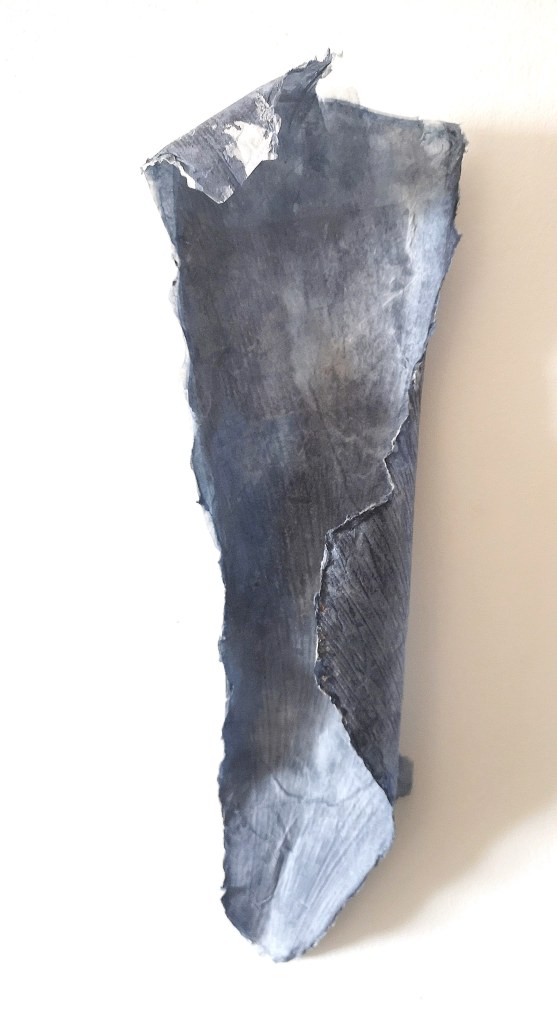

How do you envision your audience engaging with and interpreting your artworks? Is there a specific reaction or response that you hope to evoke from viewers?
We desire our works of art to be catalysts for gaze, reflection and discussion, and to consider different perspectives, to touch the deepest and most intimate part of the human soul. Our art is introspective, intentional, intimate, we show our own point of view.
It is an encounter between our universe and that of the viewer, we want to bring him closer to a new language and trigger curiosity to broaden his vision. There is no perfect interpretation to read an image. The vision of the work changes according to the gazes, the eyes show us what we know, it takes the predisposition to see. Viewers will have different, even unexpected reactions.
We do not want the viewer to remain passive in front of our work, art is a living body that pulsates energy and thought, it nourishes the spirit of positivity and critical analysis.
The engagement becomes reciprocal both on our part in wanting to present an exhibition or work that has meaning, content, and on the part of the spectator who must allow himself to be emotionally involved, reflecting and elaborating his own concept.
Are there any upcoming projects or exhibitions that you are particularly excited about or that you would like to share with our readers?
We are enthusiastic to share with you our future projects. We have been working on it assiduously for many months, words and images will be the protagonists of a book written by Vincenzo and illustrated by me – Francesca.
For Vincenzo, it has always been a strong impulse to express himself with words, not only with images. He explores his inner world and wants to share it. It is a collection of a series of short stories, where the energy of the human soul takes central value in the structure of the whole work.
Stories extrapolated from everyday life, apparently banal, simple. Something extraordinary, unexpected always happens, as life is, a game of contradictions that often exceeds our ability to deal with them rationally, leading us into unknown and obscure paths.
Beyond Ourselves the title of the book, is a reflection on the simple daily routines that can suddenly lead to extreme, harsh situations, with sometimes dramatic consequences, shedding light into the half-light, discovering beauty and wonderful aspects ignored or underestimated in life. There is always a main, ordinary character who, at the end of the story, discovers that he has overcome insurmountable trials and knows himself.
As for the painted images, the lightness of the drawing, the expressive immediacy, the unpredictability, the transparency are the characteristics that pushed me to use the watercolour technique, which allows me to express myself at my best, to realise the images that arise from reading the individual stories.
I thought this technique was better suited to reflect the images in Vincenzo’s words. Watercolour has that something unpredictable, instinctive, no matter how much you want to control it, it always finds its own dimension. It allows me to show human frailty, the experience in which each of us is reflected.
In this new journey, I have found an analogy between the fluidity of storytelling and the unpredictability of life with the alchemy created on paper between water and coloured powders. It is the colour that makes me reach the images, which are like snapshots, light but incisive impressions, so I can tell the story. In this process, I did not want to take the lines to abstraction, but let the figurative prevail.
This new artistic challenge and this project have stimulated and motivated us, we are planning an exhibition with the watercolour paintings. In a story from the book Beyond Ourselves inspired by a story that really happened in our neighbourhood, the idea of creating a life-size three-dimensional sculpture of a protagonist of a story was born.
It is in this case that we will use the power of art to touch people on an emotional level to induce them to reflect on the importance of nature and the consequences of thoughtless and instinctive actions in order to regain connection and dialogue with it.
Francesca Romana Tessadri
Your creative process explores the influence of the visual and cultural environment, its metamorphosis, and the empathic relationship between humans and nature. Could you elaborate on how these elements shape and inspire your artistic vision?
Unquestionably, I consider that as an artist I am an observer, I select what interests and inspires me, I devour everything around me selectively, slowing down time in order to shape the object and integrate it into my art.
In my creative process I emphasise the strong influence of nature which is constantly present in my life, a dialogue and connection is established.
We have lost the ability to feel, we have denaturalised, desensitised and disconnected with the natural environment. We need to regain communication. J want to show the human/nature connection with my works, both come from the same primordial dynamism and have that imperceptible fragility that expresses itself in an essential and ephemeral beauty.
Walking on the beach, I let myself be conquered by nature, I take elements left by it or by man that speak directly to my deepest self.
The chosen element is transformed by time, water, wind, salt, waves. This is what fascinates me, because it is an action with an uncontrolled, free, essential result, there is a harmony, a beauty manipulated by nature.
I observe the element carefully, I discover details. I decide to use it, I am aware that it will be part of the work. I take possession of the found object and in the instant that it will be included in my research, its identity will undergo a further change activated by my creative energy. I do not intend to destroy its essence, but I want to collaborate and experience the most intimate part of the process of change initiated by nature.
What fascinates and amazes me is the unpredictability of transformation. Change is not intentional, it has its own dynamism, its own unique, unrepeatable evolution. Despite being a process of continuous change, it has a balance. Transformation is a sign of freedom, a revolutionary act. The life is a continuous change, like matter to which I have given the possibility of becoming something else.

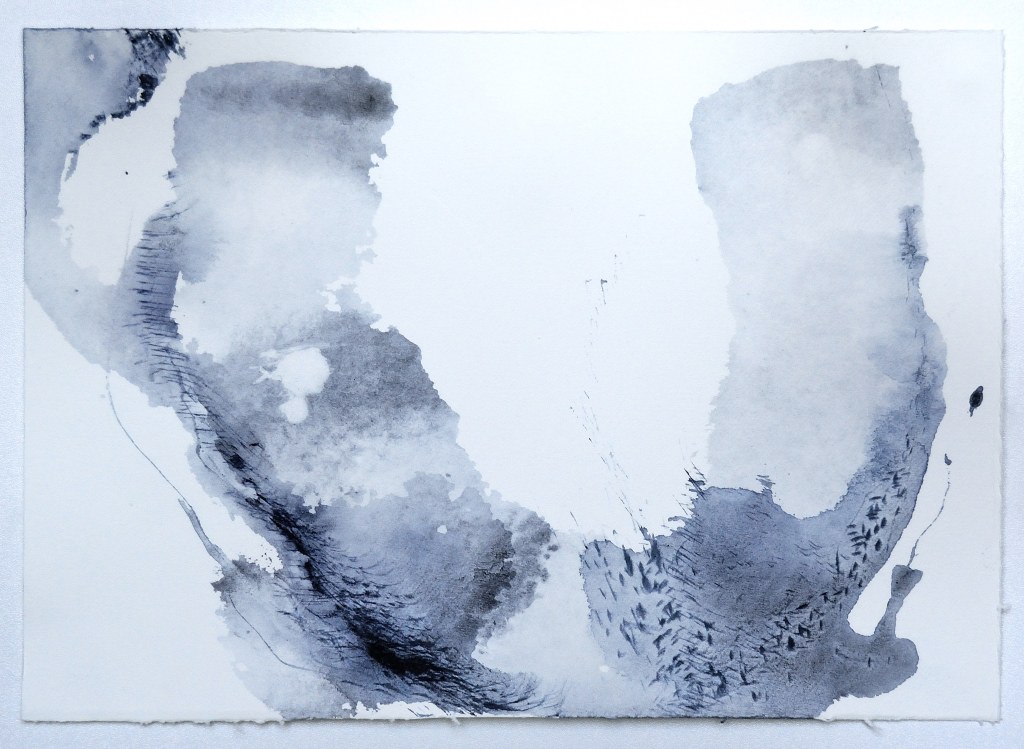
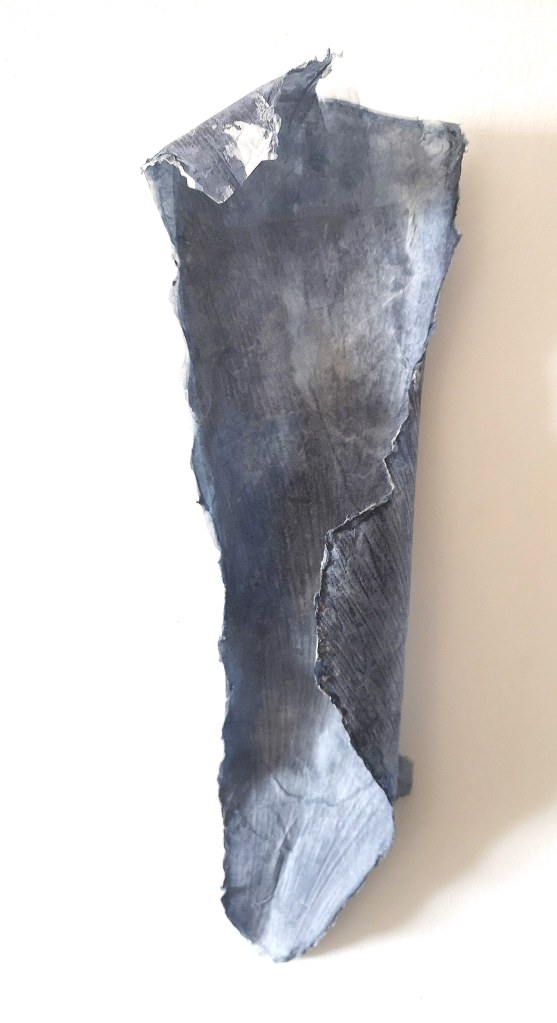

Your recent series reflects a period of isolation, capturing a sense of vulnerability and emptiness. How do you envision the viewer connecting with this theme, and how does it contribute to a broader dialogue about shared human experiences?
In order to find a connection in my recent works, the viewer has to be able to abandon himself and detach himself from the context in which he lives. It is appropriate to develop a certain sensitivity, to accept his fragility, which is a condition that each of us knows well, but is often denied.
In order to share a dialogue with my works, I ask the viewer to prepare himself for the silence that is necessary to lead him into deep concentration.
I want to guide him on an introspective journey of knowledge and emotional involvement, towards the deepest core of oneself.
He will feel a sense of vulnerability in being reflected in the fragility of my works with irregular shapes where I present a sense of mutability, I emphasise the change that is a natural phenomenon. It is found everywhere, sometimes we try to harness it, normalise it, standardise it with conventional canons, to find emotional stability, which in my opinion does not stimulate evolution.
To experience change and instability is growth. However, moments of fragility imply a change, a discontinuity, as in my forms. It is important to rediscover the connection between man and nature in order to understand these mechanisms. We have forgotten what it means to contemplate, because not doing this means losing many emotions.
The period of isolation allowed me to capture the sense of inner emptiness and I expressed it in irregular, convex shapes with the white of paper, a neutral colour that does not give any points of reference. The emptiness creates a dynamic energy and visual balance, evoking the feeling of temporality and movement. Empty spaces suggest the passage of time and the movement of nature. It is emptiness, which is poetry in space, causes an invisible flow that pulls everything into a lively movement, until a transformation is achieved. Lack and fullness meet.
Even the vibrant light moving across the surface of the paper changes it and reveals its fragilities. To open a dialogue with the viewer is to radically change the approach to my works.


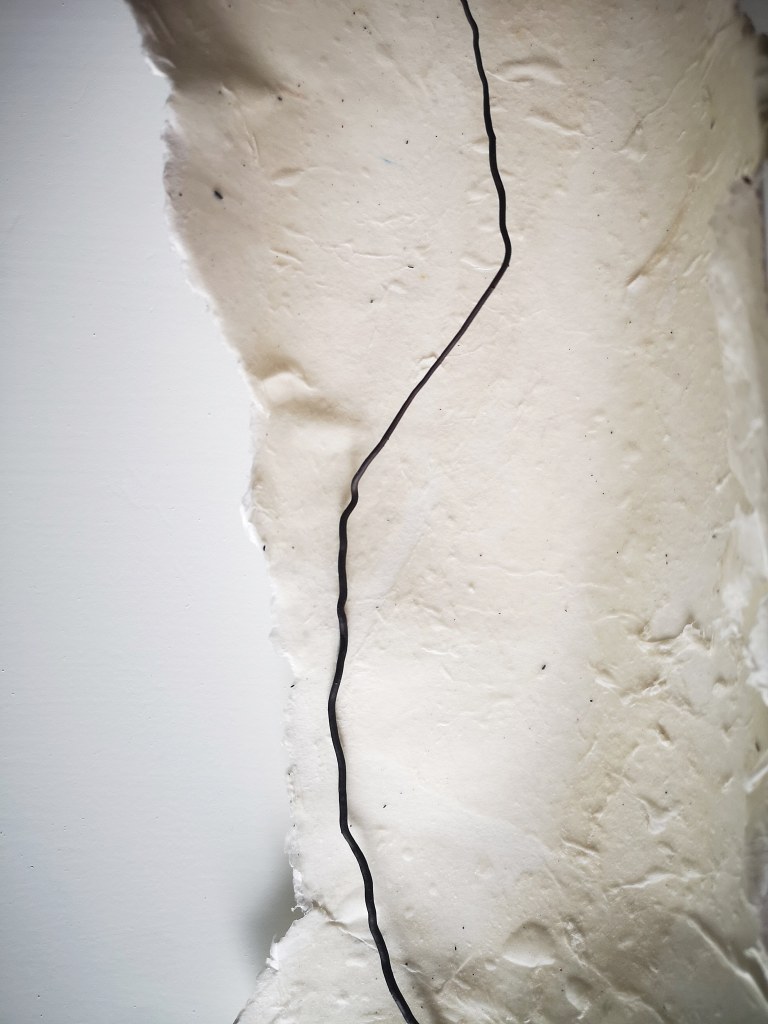
Your creative process involves a unique engagement with paper, tearing, burning, and folding it according to your artistic needs. How does the choice of paper as your primary medium contribute to the expression of fragility and evolution in your artworks? Additionally, are there specific qualities of paper that resonate with the themes you explore in your artistic endeavors?
I use different types of paper in different ways, I have been able to learn about its limitations and its great possibilities, working with it I have discovered its fragility, its lightness, it can break, but it has its own resistance. The paper shapes the dialogue between the fragility of matter and the fragility of existence. In recent years it is my favourite medium, it has a memory that is lost in time.
It is not just a surface, it is also a territory where transformational experiences take place. I use paper because I rediscover the connection between man and nature, it comes from natural elements, man participates with painstaking and lengthy work, even spiritual I am clearly talking about handmade and not industrial, I use these types of paper.
The surface undergoes a mutation that will continue with my interventions, it is in the instant that I capture its change. It takes in and absorbs the unpredictability, transparencies or opacities of pigments, it lets itself glimpse or makes its surface invisible. It is a living, changing material that allows me to experiment a lot. Each type of paper, depending also on its thickness, absorbs water and colour differently, it is fascinating to collaborate in its change. The Japanese paper I used in the series, overlapping it retains its transparency, it shows both its delicacy and its strength, the two opposites help me in my realisations, that is why I use it. Another aspect to consider is the gesture that is present in tearing the paper, in beating it, in transforming its surface, in applying colour.
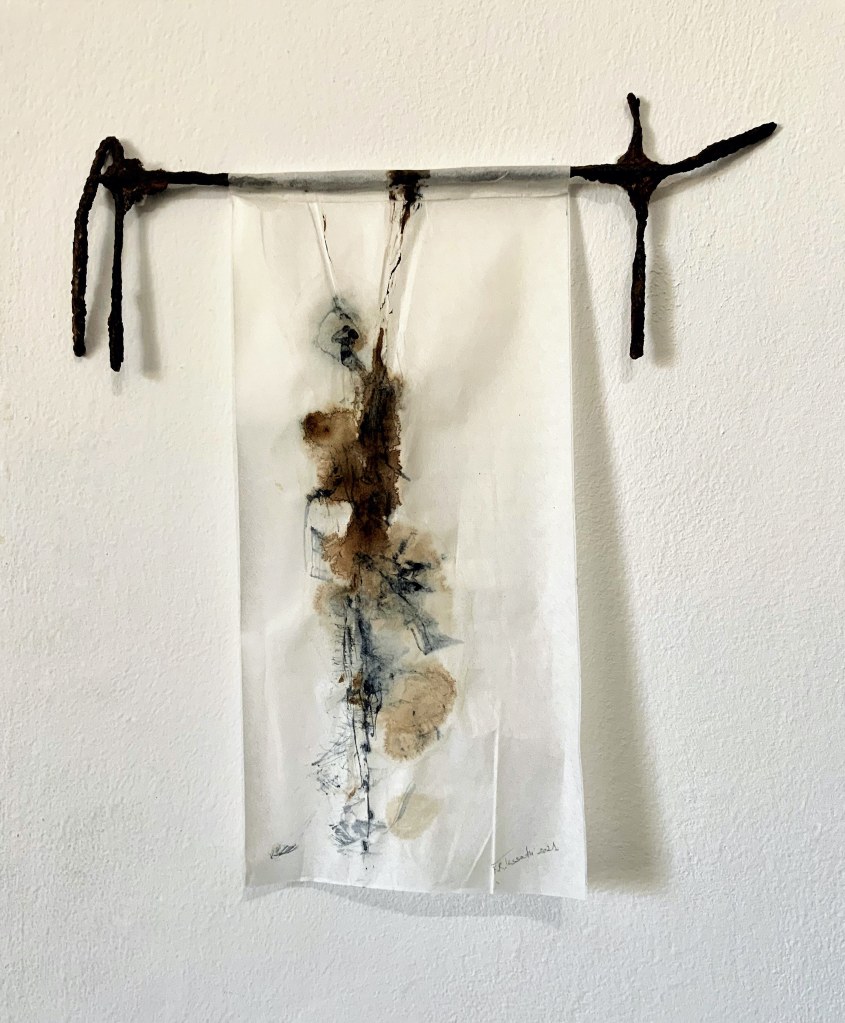
Your fascination with the change brought by the interaction of colour with water and the transformation of the sea’s surface is intriguing. How does this process influence your artistic expression, and what does it signify in the context of your works?
Living in symbiosis with the sea and observing it daily allows me to slowly discover it, I find affinities with my creative process. Its surface ripples with the blowing of the wind, it changes as it breaks on the rocks or on the sand, it always changes in its continuous movement, even the reflections of light change its appearance.
The gaze towards the sea never remains in semi-darkness, but discovers details and aspects that I once tended to underestimate or even ignore, we need to rediscover the ability to marvel at things that apparently seem normal, taken for granted, such as the floating of the waves.
This process of metamorphosis fascinated and inspired me to such an extent that I also wanted to be part of it by enriching my research, it is the gesture that leads me inside.
I relive it when the brush soaked in water and pigment touches the surface, when I build structures with paper, I too am involved in a process of transformation.
The blank sheet becomes something else.
We do not realise the limitless beauty, putting colour into water, its dissemination. The gesture is simple, but it is astonishing when it comes together to merge with the surface, it is lost, it spreads is an unrepeatable, uncontrolled moment. They are small details but never taken for granted, the key to this is the tension between different elements coming together. This process serves my unconscious, I know myself and has a function of liberation and connection with nature.
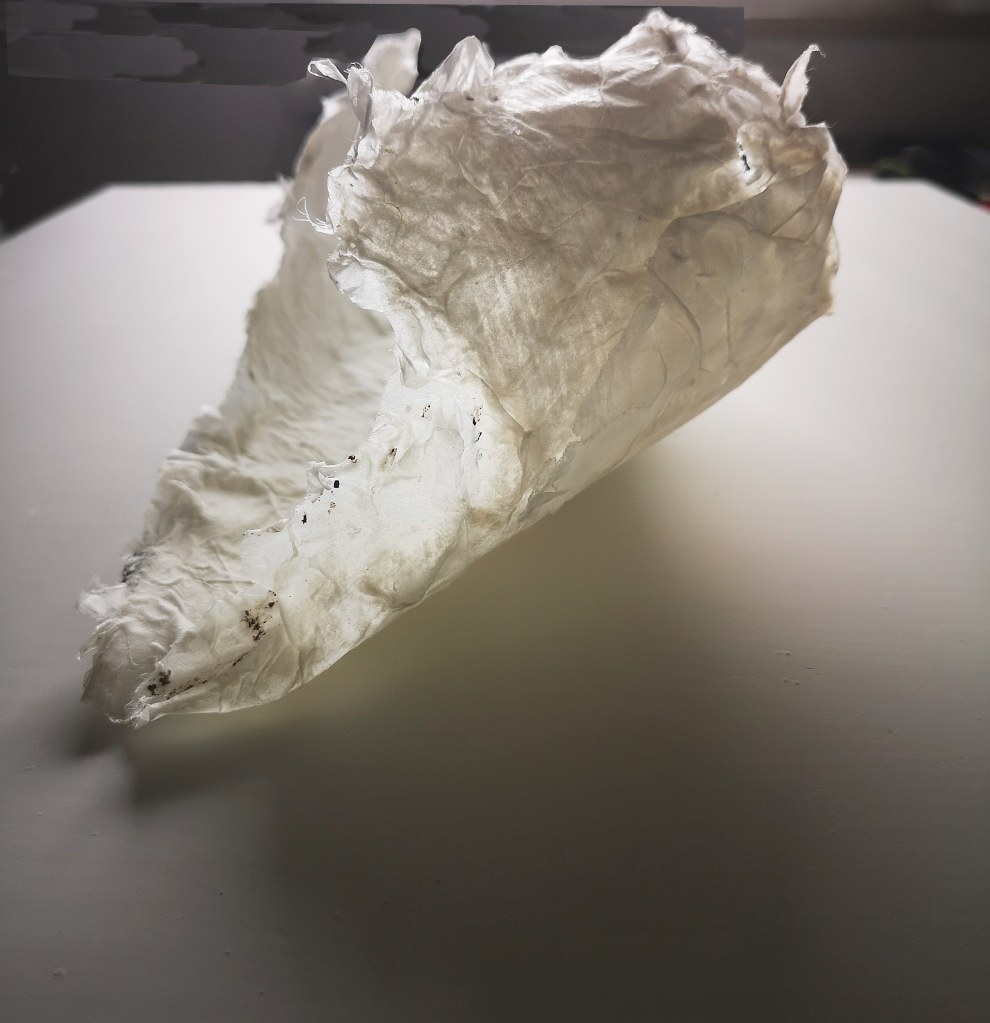


Can you walk us through a typical working day in your studio? How do you organize and structure your day to bring your art to life? My studio, where disorder reigns but in which I find myself, is a place of insights, of introspection, of narratives, of action in which something happens within a space.
A space of silence where you can stop and go beyond your limits. The days are intense, sometimes they even change, it is normal, I organise myself according to projects.
I love working early in the morning, the light entering the room hits the table, there is good lighting. I get my paint colours with coloured powders, it feels more natural. After choosing the colour with a knife I pick it up, I add a little binder and water, I mix it with light pressure, it is a repetitive gesture, which calms me, only when I feel it is ready do I intervene on the wet support or splash some water only in certain areas, it depends on the effect I am interested in obtaining.
If I am not fully satisfied with the result I continue experimenting, I change the palette using different colours, I modify the idea or I draw the same subject several times. It is a continuous research.
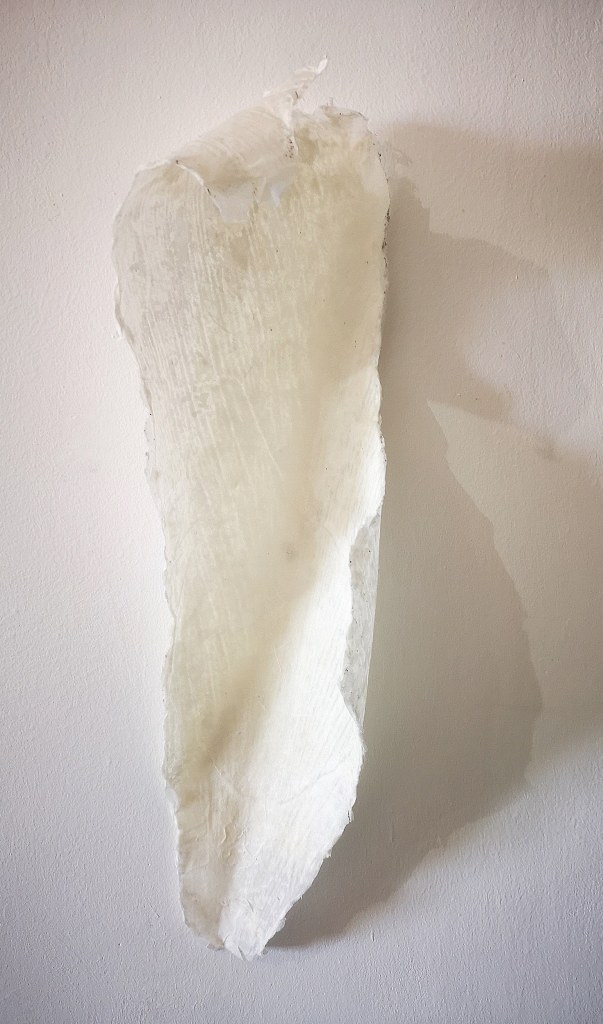
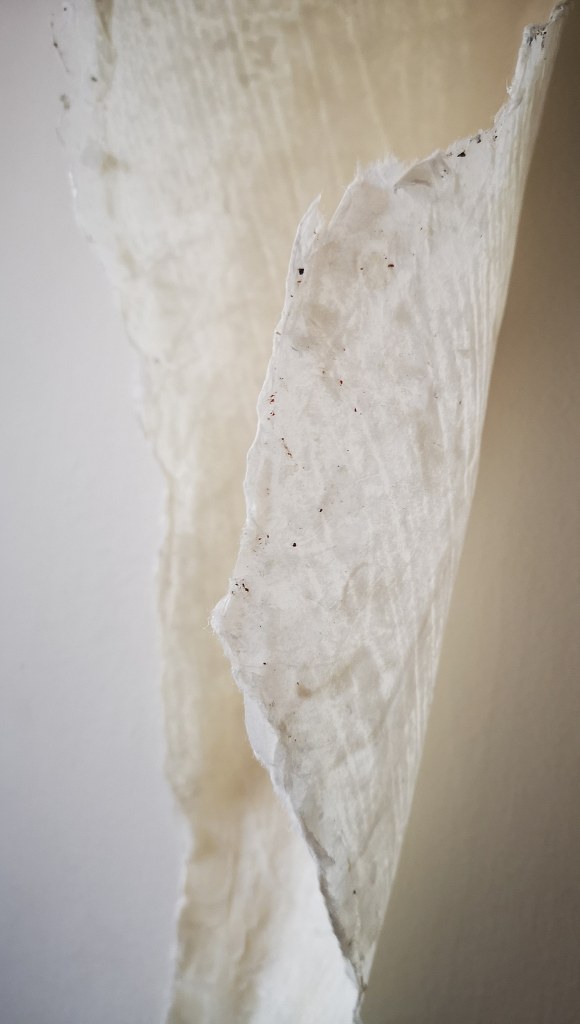
I take time out every day to walk with Vincenzo on the beach, we take long walks. I recharge my batteries with positive energy, I take time to reflect, it allows me to regenerate. It is a necessity to be in contact with nature and to hear its sounds, which detach me from the urban context and allow me to immerse myself in a different reality. I take possession of objects that will be part of my studio, I observe details, I draw them.
I dedicate the afternoons to doing research with the computer, checking emails. Especially in this period that we share the production of the book Beyond Ourselves, with Vincenzo we discuss and exchange views.
The night, on the other hand, with its silence allows me to free my mind. I read or sketch out ideas on a pad of paper in order to process them better the next day, when I will work on the paper with watercolour.
Vincenzo Brandi

Your multidisciplinary approach to art and writing reveals a profound philosophical impact on the relationship between individuals and the surrounding social realities. How does your thinking about people and society influence the different ways you express yourself through art?
From a young age, I have been interested in issues related to the human condition and social realities, topics that have always been addressed in family reflections and discussions, sensitive to these issues.A strong creative power was generated in me in observing the transformation of society in its various aspects.
I could be described as a solitary artist, also due somewhat to my character, not that I despise company, but at certain times of the day I love silence and solitude, because they give me the opportunity to reflect and observe people’s personalities and behaviour from a distance. I am very fascinated by it and I identify it as a square canvas representing the completeness and balance of the four psychic functions: thought, sensation, intuition and feeling.
In some of my works I use the white square space, which is not random, but aimed at expressing the concept of a society that tends to close in on itself, in precise and clearly delineated spaces. I insert carved bands of white paper into the surface, unquestionable and rigorously precise spaces; I contextualise today’s globalised individual, similar to the other, in a well-established pattern. I use a pure and direct language in my works.
Nothing is left to chance, everything is meticulously organised. Observing people fascinates me and I feel an irrepressible urge to express their behaviour in different mediums: painting, sculpture, writing. These days I express this in short films, peculiar sounds and simple images that tell an emotion, a concept, a context in a few minutes.
Their gestures, their words, the way they express themselves, think, judge and love, everything is a cue for me to create a story, a painting, a work that depicts this wonderful, complicated universe. I cannot be detached from the world around me even if I observe it from afar, I absorb its positive or negative energy.


Your focus on Eastern and Western philosophical and artistic dialogues is compelling. How do these influences converge in your work, and what specific aspects of Eastern philosophy resonate with you?
Eastern philosophy captures the thought of silence, giving voice to harmony with nature that balances the natural flow of life. I need time, to reflect, to construct a thought, a concept, an idea that develops my creativity.
Today’s society is frenetic, hungry for images and information, it devours everything in an overbearing and fast way. I currently explore Eastern philosophy with interest, particularly Wabi- Sabi thought, I consider it closer to my way of being and my artistic research.
It was Francesca who proposed me to approach this philosophical concept, seeing me in search of a balance between what I perceived and the growing need to create an artistic dialogue with the public on themes dear to me.
I introduced these concepts into my lifestyle and creativity.
I can slow down time by observing society in its multifaceted realities from the simplest to the most complex. If I chased after today’s time, I would not be able to achieve my artistic goals. I find in oriental philosophy a true and personal spontaneity, it becomes a source of growth for me, pushing me to discover new, unexplored paths.
This introspective path of mine converges in my works with attention to the proportions and balances of spaces, recognising symbolic meanings in the geometric forms; I emphasise the importance of the purity of monochromatic colour on a surface delimited in its structure, but infinite in its concept as the origin for a new artistic journey.
I look at pure, decisive, direct colour, which goes to highlight aspects.
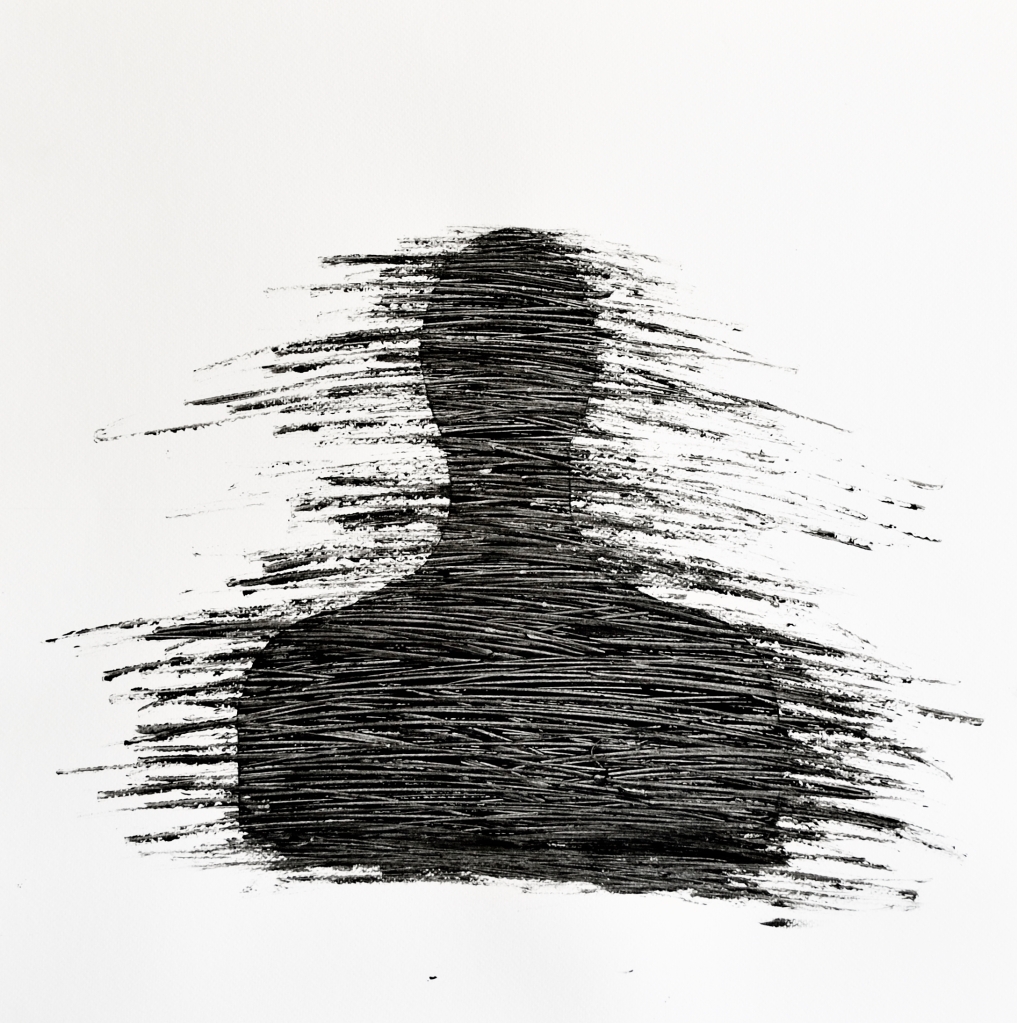
Your current exploration of the emptiness of contemporary society is thought-provoking. Could you share insights from your analysis and how it manifests in your creations?
One aspect of Eastern philosophy that has fascinated me over the years is the concept of emptiness. I have explored not only its symbolic and formal aspect, but I have analysed it within society. Looking with interest at the reality of emptiness, I have realised the importance of its existence.
It is a vital breath in a flow of continuous transformations whether they are related to matter or the social context. Without the void we would be condemned to stability and immobility, because it is in the void that the transformation of a space or human condition takes place.
Emptiness does not only exist in a surface defined by solids and voids, the presence absence of matter, but also exists in circumstances and situations that develop and transform society.
The first perception I had as I delved into the subject was that this word, void, encapsulates an enormous, infinite, living inner energy, thanks to its ability to create dynamics in continuous movement.
This might sound like a play on words, but it is not, because perceiving emptiness also means perceiving the absence of fullness and the strength of its fullness, all of which makes it active. Even in nature, emptiness has its own identity, in fact the expansion of space into an infinite dimension, for example, holds the presence of emptiness in a first-order role.
I began to wonder, does the void exist in society? Observing people’s behaviour in contextually opposite situations, emptiness is generated. It is a metamorphosis, a renewal, two or more opposing contexts face each other, not to cancel each other out, but to change into another identity giving rise to a new reality.
It may sound like something complex, but it is much simpler than you think. The void is not an inactive entity, but on the contrary it is alive, it mutates, it regenerates itself every time this impact occurs. It is a place where transformation is born in a neutral space. This neutral zone is no longer conceived as absolute nothingness, but is a place full of energy.
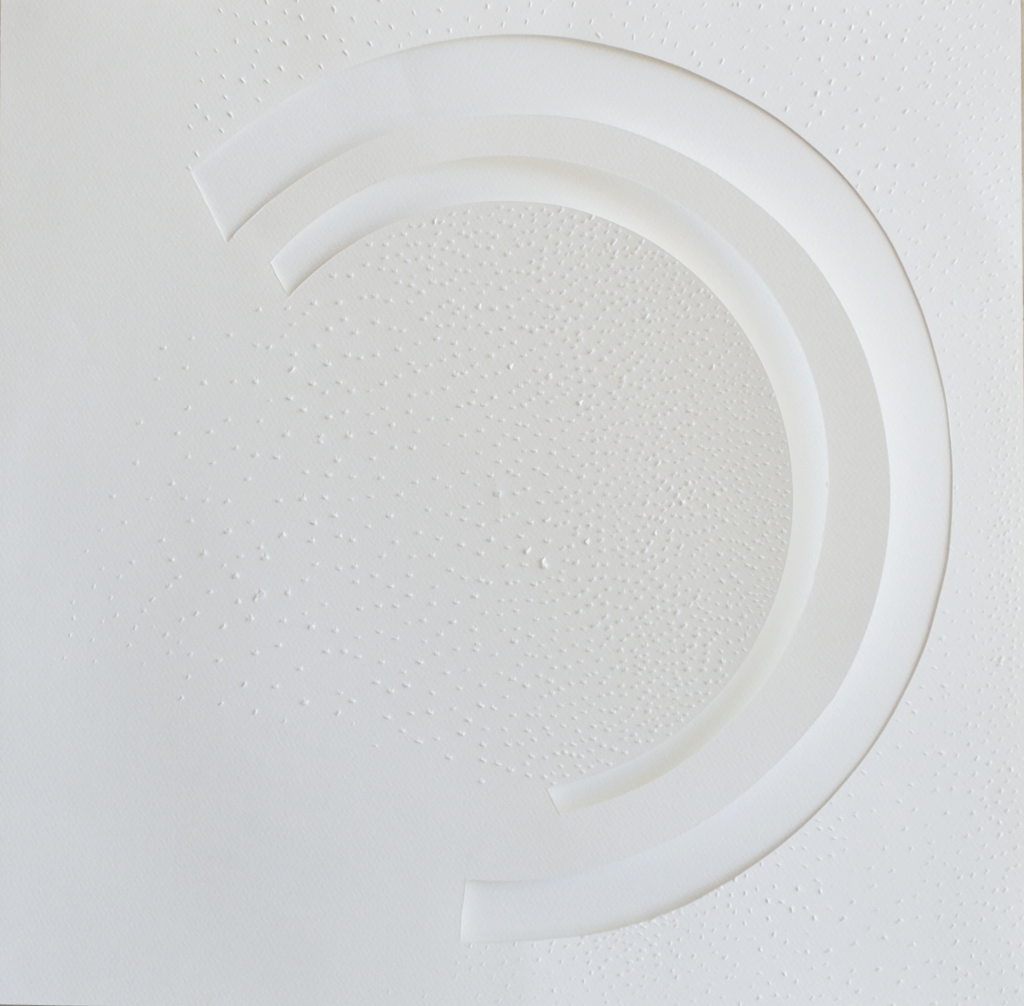

This is why we cannot avoid the existence of the void. It can give us the vitality of our existence, without it we would be and become static, immobile, nullifying the evolution within us. Emptiness is a vital part of our self, it is an important element for each of us, because it moulds our consciousnesses and encloses them in unique, non-mass entities. I focus this thought with the will to translate it into art, I look at society living the meaning of emptiness in an improper way.
I perceive that the collective lives in an obsessive craving to devour its present time, leaving no room for the void to exist. Today’s man wants to transform his living space into increasingly controlled actions without ever creating for himself a dimension where emptiness can exist. We perceive it as restlessness, anxiety, convinced that it causes unbearable loneliness.
In order to achieve serenity and stability in its sphere of life, society inevitably pays a high price, because it has eliminated the true meaning of emptiness, excluding the sense of randomness, a path of change and inner growth.
I often wonder why we always push ourselves towards the domination of time instead of allowing time to create randomness, I wonder why we want absolute control of our existences. Perhaps to compensate for the fear of uncertainty towards the future?
When emptiness presents itself in our existences, we are constantly unprepared, to feel the void constantly present is to fill our personalities. If we began to see emptiness as a positive reality, we could have the stability we constantly seek in instability and we could also discover a new inner strength.
The cause of the loss of the true sense of emptiness is that today’s western society has excluded the positive value that emptiness can bring to our lives. By suppressing emptiness we suppress transformation. It is emptiness that gives us the strength and the audacity to change reality by also changing our personalities. Emptiness and chaos exist in equal balance.
In my works, these principles take shape and create a kind of balance and harmony in space. The emptiness present in life can change the rhythm as in my paintings, where there is a precise and constant alternation in the rhythm of the lines. Emptiness regenerates and gives a visual rhythmic dynamism and structures the form of the painting.


Vincenzo, your works involve careful reflections on space and form. Can you share insights into your choice of materials and techniques and how they contribute to the conceptualization of your artworks?
I have always loved investigating different materials and the confluence of discordant energies between one material and another, think for example of wood with paper. They have a completely opposite soul and material and yet when they come together, they undergo an exchange of forces and energy.
Lately I have been working on paper, a ductile material, you can use it in sculpture as well as in painting, it gives me the possibility to study concave and convex forms and curvatures at will.
The void in my painting has the ability to change its surface through colour and the amount of water.
For sculpture, I created a series of models to later realise them in life size. I work on the balance of mass in the thin space of paper. When I create, I observe the elasticity, strength and also the fragility of paper. It has a variety of uses, one just has to understand the objective to be achieved.
For me, paper is silent, non-aggressive, elegant, and I am fascinated every time I work with it. When I pick up a pure white sheet of paper, I have a strong emotion, looking at it, working that simple, complex white sheet of paper, I get in touch with an unknown universe and travel through it. Sometimes on this journey I deliberately want to lose myself, leaving room for creativity and instinct.
The truth is that you never know where you will arrive when you start a work, unpredictability is always at the door of creation. To realise a work on the void with paper, after having specially prepared the surface, I begin to look at its potential, I rotate it, roll it, fold it, tear it, until I find a cue. It is this dynamism that can lead me in the right direction to create a sculpture or painting.
As I work the paper I think about my reflections on emptiness, I shape it to find a harmony between my energy and his. I pay great attention to the smallest detail, because nothing is given to chance, in the act of creating everything takes on a precise, particular meaning. Attention, it leads to concentration to the point of contemplation of the infinite.

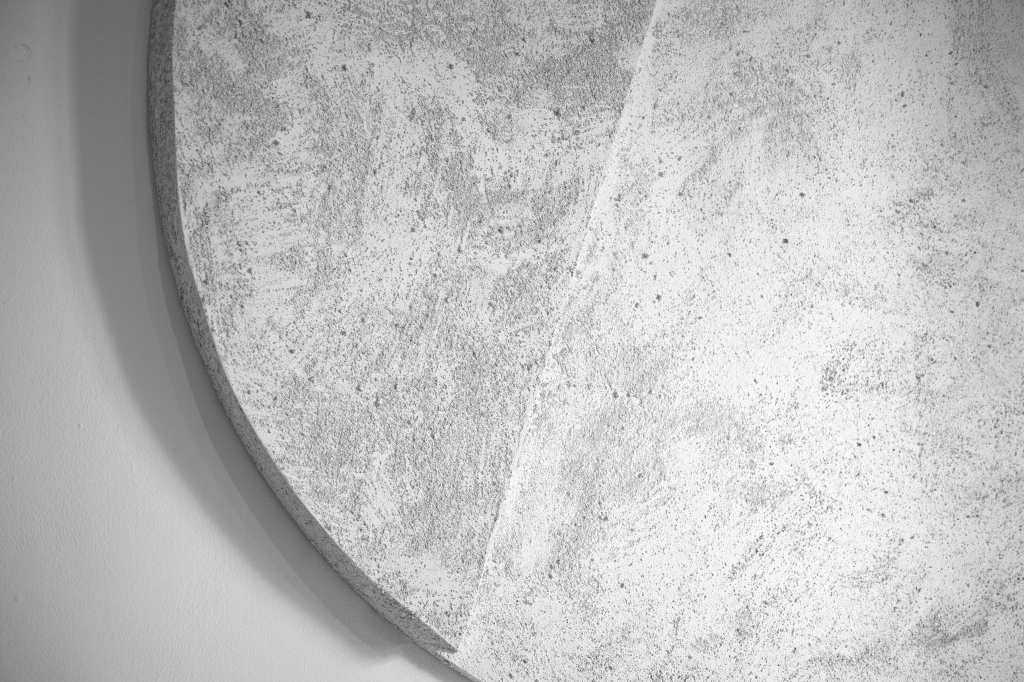
It is not easy to achieve this in the hustle and bustle of today’s society, everything is noisy and chaotic. You have to find a point of serenity and peace to be able to understand the power of paper combined with emptiness, it is easier next to nature. I am lucky enough to live next to the sea just a few metres away and I can say that sometimes it is nature itself that suggests shapes to me.

Colours play a significant role in your works. Could you elaborate on the symbolic significance of colours in conveying themes such as silence, absolute space, and spirituality?
In my introspective research, monochrome colours have the energy to show emotions in the silence of their presence. The colours I use help to strengthen my research and focus on the analysis of absolute space. Light and colour are two fundamental elements.
In this last period I have been using the white of paper, its neutral surface plays an essential role with light, it creates spaces and shadows that are an integral part of the painting. White is the colour of light, purity and spirituality, it tells stories of silences ‘everything is possible’, it is waiting to be interpreted.
It conveys a sense of calm that can foster connection with the deeper self and slows down time. White for me symbolises the human condition in its fragility. It is light that defines my linear sometimes even circular sequences, which are always rhythmed by a geometric rigour.
I seek in colour its purest, most authentic essence, which is why I use monochromatic colours such as titanium white or indigo, a refined shade of great chromatic depth, and black, which is an instrument of synthesis, for me represents a journey, it is the end but also the origin of every new beginning.
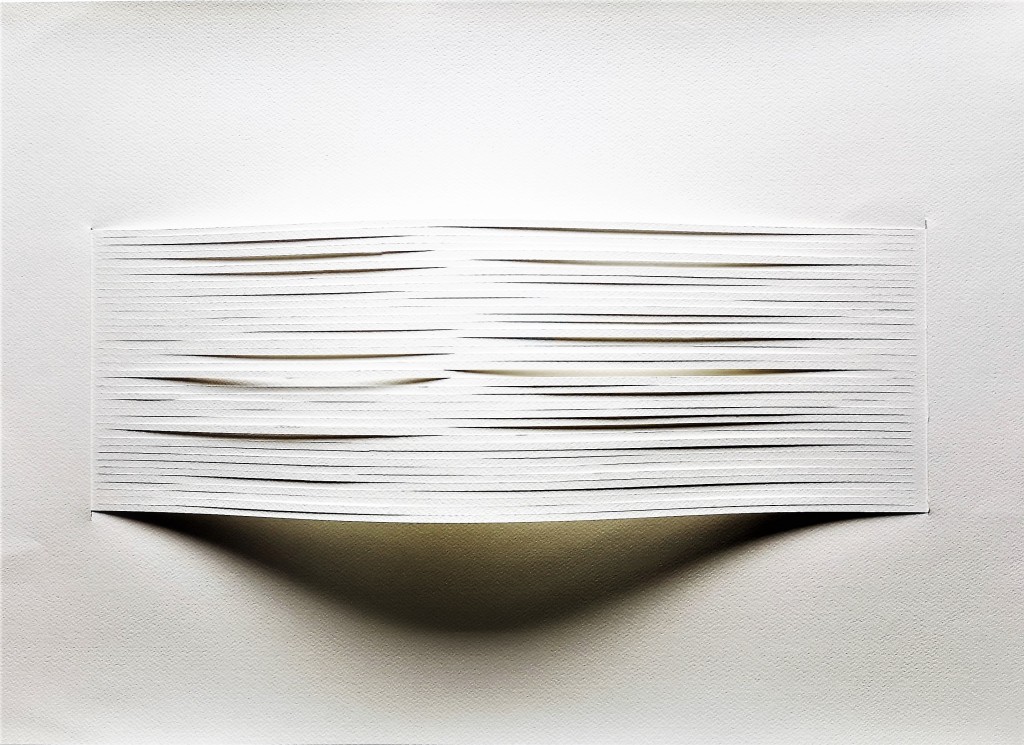
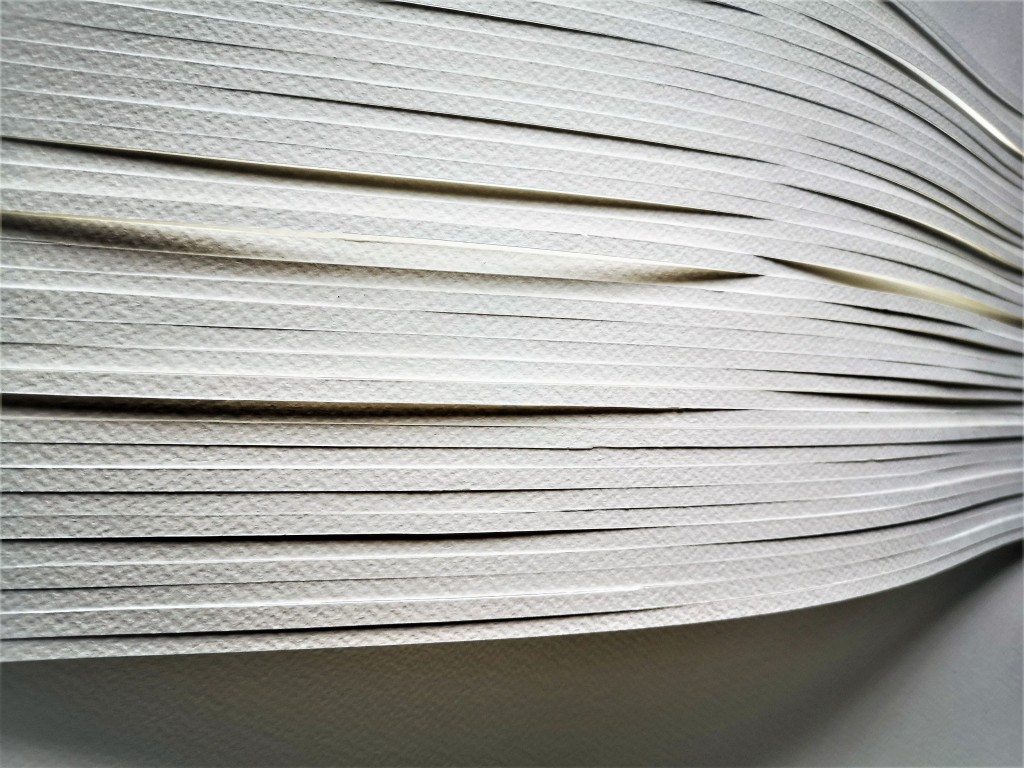
Black colour for me is elegance, it has a positive value; it represents the point of no return, but it is open towards the new not yet explored. Black is an experience I always perceive something, there is an awareness of the new. It is the absence of everything, but in black there is the absence of everything as in the void, that essence from which it is possible to see anything reemerge.
It is space that is the first dynamic element in my paintings, which interacts with monochrome colours; white plays with light and defines its boundaries, enclosing the mysteries of the unconscious and the serenity of the spirit.
With monochrome colours I evoke the deep intuition of the human soul. I share the oriental thought that finds in white and indigo a fundamental ally to communicate a feeling of peace and to foster a state of inner serenity.
This is what I seek in my paintings. The choice of these colours goes beyond aesthetics; they possess virtues of significantly influencing our perception and behaviour towards introspection, analytical thinking and the creative flow of ideas.
